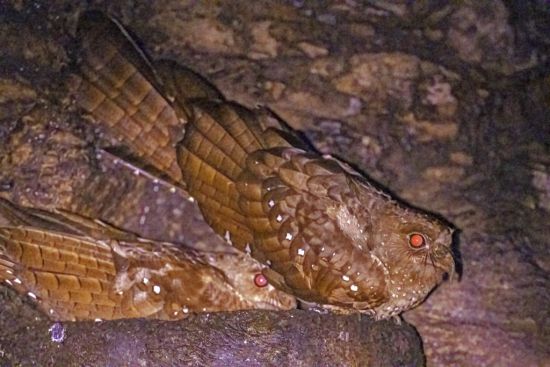Aloktewari (talk | contribs) (Clearer image) |
|||
| Line 1: | Line 1: | ||
{{incomplete}} | {{incomplete}} | ||
| − | [[Image: | + | [[Image:Oilbird_Peterday.jpg|thumb|550px|right|Photo by '''peterday'''<br />Asa Wright Nature Centre, [[Trinidad]], 21 March 2024]] |
;[[:Category:Steatornis|Steatornis]] caripensis | ;[[:Category:Steatornis|Steatornis]] caripensis | ||
==Identification== | ==Identification== | ||
| Line 10: | Line 10: | ||
==Habitat== | ==Habitat== | ||
Forests. | Forests. | ||
| + | [[Image:Oilbird.jpg|thumb|350px|right|Photo by '''Steve G.'''<br />Location: Dunstan Cave, Arima Valley, [[Trinidad]]]] | ||
==Behaviour== | ==Behaviour== | ||
Nocturnal. | Nocturnal. | ||
Revision as of 04:45, 9 April 2024
| This article is incomplete. This article is missing one or more sections. You can help the BirdForum Opus by expanding it. |
- Steatornis caripensis
Identification
41-48 cm. Reddish-brown with white spots on the nape and wings. Lower parts are cinnamon-buff spotted with white. The stiff tail feathers are a rich brown spotted with white on either side.
Distribution
Guyana, Trinidad, Venezuela, Colombia, Ecuador, Peru and Bolivia.
Taxonomy
This is a monotypic species.
Habitat
Forests.
Behaviour
Nocturnal.
Diet includes the fruit of the Oil Palm and tropical laurels; this is the only nocturnal fruit-eating bird.
The nest is a heap of droppings, usually above water. Two-four glossy white eggs are laid.
Although the Oilbird forages by smell or sight, it is one of only a few birds known to navigate by echolocation in sufficiently poor light conditions, using a series of sharp audible clicks for this purpose.





